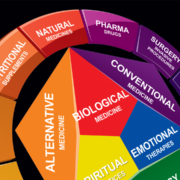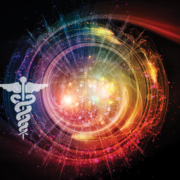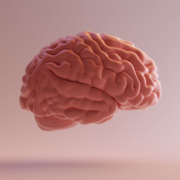How NAD+ Improves Muscle Function and Regeneration
Are you an athlete? Fitness trainer? Physiotherapist? or perhaps your goal is to engage in a workout routine that incorporates movement into your otherwise sedentary life?
Irrespective of your workout goals, know that there is more to muscle function and fitness than meets the eye. The widely accepted notions around workouts propagated by the fitness industry are that:
- Building muscle mass is directly proportional to the amount of workload your muscles are subjected to
- A balanced diet is crucial for healthy living
- Dietary protein intake helps achieve fitness goals
While there is truth to this, it merely represents one side of the coin. It is time we had a different conversation around fitness; one that provides a new perspective on holistic fitness and wellbeing. And one that is based on scientific evidence for muscle function.
Whatever your fitness journey is, it is vital to note that your muscle mass serves you way beyond everyday workout goals and athletic performance. Research has shown that muscle function has a role in temperature regulation, overall metabolism and that it even impacts general immunity. NAD+, a cellular energy precursor, has emerged to be a key player in this regard. In this article, we help you get the facts straight about how NAD+ improves muscle function and regeneration, it’s role as an anti-aging molecule, and why it’s known as a biohacking agent.
Let us take a closer look.
What Do Muscles Need? What Impacts Muscle Performance?
Before we take a deep dive into NAD+ territory, let us touch upon the common types of exercise routines people usually engage in. Hopefully it’ll help you better relate to the NAD+ conversation and overall big picture in this article.
Exercise Categories
- Aerobic or Endurance Training involves cardio focus. It emphasizes on strengthening the cardiovascular system, the cardiac muscles itself, and muscles involved in respiration. High impact aerobic workouts can stimulate bone growth and delay onset of osteoporosis. However, it is not the best approach to build muscle mass in the long run.
- Balance Exercises help strengthen the body’s core and are particularly instrumental in older adults to help prevent falls and fractures.
- Anaerobic Exercise refers to strength training where glycogen reserves of the muscle are used up as fuel for energy generation in the absence of oxygen. This predominantly is the workout of choice for stimulating growth of muscle mass.
- Flexibility Exercises such as yoga and Tai Chi help maintain a wide range of motion and are great for maintaining circulation and for developing control and body stabilization.
The popular HIIT training, Pilates, and multiple other at-home and gym training modules are designed to include a combination of one or more of these four exercise categories.
There are nearly 640 skeletal muscles in an average human body. These muscles in addition to providing strength, support, stability and a range of locomotion, have other vital functions as well. Irrespective of aerobic or anaerobic exercise, muscles need the energy molecule ATP, glucose, glycogen, NAD+ and oxygen to function. Muscle cells take up glucose but store this energy source in the form of glycogen. Exercise stimulates the release of stored glycogen which is then converted into glucose via anaerobic metabolic pathways. Nicotinamide Adenine Dinucleotide (NAD+) is central for these pathways to be efficiently executed and to occur with precision. A large majority of cellular NAD+ resides within the muscle mitochondria which is an energy powerhouse.
This is where all the action happens with respect to cellular metabolism and ATP generation. Cellular NAD+ can be viewed as a master regulator of several metabolic reactions and hence its optimal levels in the muscle are necessary for the generation and utilization of energy within the muscle. Thus, maintaining the balance of NAD+ biosynthesis and degradation is central for cellular homeostasis and energy balance.

See how we can help you restore complete health of body, mind & spirit.
NAD+ in Muscle Development and Regeneration
It is known that strength training exercises result in hypertrophy of the skeletal muscle and atrophy occurs in response to disuse. During oxidation-reduction (redox) metabolic reactions, cellular NAD+ levels can become depleted overtime. With age, the ability of the body to synthesize new NAD+ and self-replenish its reserve reduces significantly. Age related decline in NAD+ has been documented to result in mitochondrial dysfunction and reduced ATP generation, which in turn correlates to fatigue and muscle wastage in conditions such as sarcopenia. Furthermore, reports have found that the ability to recover from neural disorders, ataxia, muscle degeneration, tremors and age is significantly diminished due to low NAD+ levels.
NAD+ and Aging
Post injury, muscle repair is known to be regulated by satellite quiescent cells which reside in the basement membrane in muscle fibers. The production of these self-renewing cells is triggered primarily in response to injury. SIRT1, a crucial nuclear signaling protein is an upstream effector for these quiescent cells. In addition to its many functions, NAD+ is a direct regulator of SIRT1. Therefore, reduced NAD+ levels as we age have an effect on available SIRT1 as well. Ultimately, the ability of the muscle to repair from injury is impaired drastically.
Furthermore, levels of NAD+ have been linked to health and lifespan in organisms. Recent research has shown that NAD+ supplementation indeed does have a beneficial effect on improving lifespan in mouse models of ataxia.
While mental grit, willpower, and determination are key factors that contribute towards an effective exercise strategy to achieve your fitness goals, the physiology of skeletal muscle function and its primary molecular components cannot be ignored. From a fitness perspective, NAD+ supplementation can be a great tool to support the capacity of your muscles to improve and function better.
NAD+ Sources – Why Do You Need A Supplement?
Dairy milk, fish, yeast, chicken, green vegetables such as peas and asparagus are known to be rich direct dietary sources for NAD+. However, consumption of these foods does not always ensure replenishment of depleted cellular NAD+ reserves. Factors that determine the absorption of NAD+ from these sources into the systemic circulation include the amount consumed, dietary composition, presence of environmental toxins, gut microbia and general health of the GI system. Variability owing to these factors is high which necessitates the use of NAD+ supplements.
Owing to nearly a century worth of extensive research, NAD+ supplements are emerging all over the health and wellness market. Compared to its counterparts currently available in the market, Nadovim, a NAD+ supplement formulated by the head physician at Innovative Medicine, provides a paradigm shift in how muscle function and aging is currently viewed. NAD+, seamlessly delivered via Nadovim, is an effective way to boost overall health due to its high bioavailability consumed orally with just two pills, daily. Scientific reports have noted decreased fatigue, reduced ataxia, and tremors in patients with improved cellular metabolism due to replenishment of NAD+.
Learn more about Nadovim and begin your journey to optimize natural aging, improved strength, cognitive function and more.
Disclaimer: The statements made in this article have not been evaluated by the Food and Drug Administration. Any products or treatments mentioned are not intended to diagnose, treat, cure, or prevent any disease. Please consult a licensed medical practitioner for medical advice.
At Innovative Medicine, we believe in transparency. We want you to know that we may participate in affiliate advertising programs pertaining to products mentioned herein.
See how we can help you restore complete health of body, mind & spirit.
Join our mailing list and receive exclusive offers + information!







Leave a Reply
Want to join the discussion?Feel free to contribute!